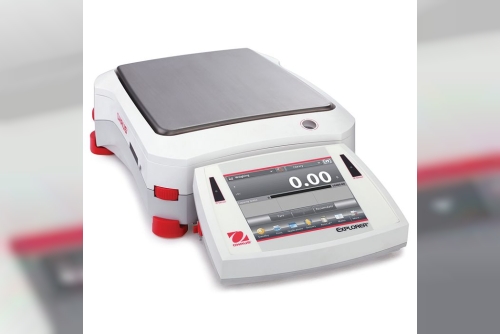In the realm of scientific inquiry, precision and accuracy are not just ideals—they are absolute necessities. One of the unsung heroes in the laboratory that upholds these standards is the precision balance. Often overshadowed by more complex instruments, precision balances play a foundational role in virtually every area of laboratory research, from chemistry and biology to pharmaceuticals and environmental science.
What is a Precision Balance?A precision balance is a highly accurate weighing instrument used to measure mass with fine resolution, typically ranging from milligrams to several kilograms. Unlike analytical balances, which are used for extremely small mass measurements with sub-milligram readability, precision balances offer a perfect middle ground. They are ideal when slightly less accuracy is acceptable, but high reliability and consistency are still required.
Precision balances are essential in laboratories where repeatability, speed, and ease of use are critical. They come equipped with features like digital displays, internal calibration, data connectivity, and even touchscreens in advanced models.
Why Precision Matters in ResearchAccurate measurement is the backbone of any scientific experiment. A small deviation in mass, especially when preparing reagents, solutions, or samples, can significantly skew results. Here’s why precision balances are so crucial in research environments:
1. Ensuring Consistency in Experimental ProceduresMany laboratory procedures, such as titrations, synthesis reactions, or chromatography sample prep, require exact quantities of materials. Using a precision balance ensures that these amounts are consistent, experiment after experiment. This consistency helps eliminate variables that could lead to inaccurate or irreproducible data.
2. Improving Data Quality and IntegrityData is only as reliable as the measurements that support it. When working with sensitive compounds or conducting micro-scale experiments, even minute measurement errors can lead to false conclusions. Precision balances provide the level of accuracy needed to ensure that the mass values used in calculations and reports are dependable.
3. Reducing Waste and Optimising ResourcesIn both commercial and academic labs, chemical reagents and biological samples are often expensive and limited. By using a precision balance, researchers can avoid overuse of materials, reduce waste, and maximise the value extracted from available resources. This is especially important in pharmaceutical development and environmental monitoring, where sample availability can be scarce.
Applications Across Scientific DisciplinesThe versatility of precision balances makes them invaluable in various laboratory settings. Here are a few disciplines where their role is particularly prominent:
ChemistryIn chemical laboratories, preparing standard solutions and reagents requires exact amounts of substances. Precision balances help chemists weigh chemicals with accuracy to prepare molar solutions and maintain precise stoichiometric ratios in reactions.
Biology and BiotechnologyIn biological research, weighing buffers, enzymes, DNA samples, or cell culture media with high accuracy is vital. Precision balances ensure that sample concentrations remain consistent, which is critical for repeatable outcomes in assays, PCRs, and other sensitive procedures.
Pharmaceutical ResearchPrecision balances are integral in compounding, drug formulation, and quality control. Whether weighing active pharmaceutical ingredients (APIs) or excipients, researchers rely on precision balances to ensure dosage accuracy and comply with stringent regulatory standards such as GMP and GLP.
Environmental ScienceIn environmental labs, researchers often deal with very small quantities of pollutants, heavy metals, or organic compounds. Accurate weighing is essential when testing water, soil, or air samples for contaminants.
Food and AgriculturePrecision balances also play a role in food analysis and agricultural research, helping measure components like sugar, salt, fat, and nutrient levels with accuracy that’s crucial for safety and nutritional labelling.
Key Features of Modern Precision BalancesModern precision balances are engineered with advanced technology that enhances their utility and ease of use in research environments. Some of the key features include:
High readability (0.001g to 0.1g): Suitable for weighing small samples with great accuracy. Internal Calibration: Ensures consistent accuracy without the need for external calibration weights. Tare Function: Allows for zeroing of container weights to measure net sample weight. Data Connectivity: USB and RS232 interfaces for transferring data to computers or laboratory information management systems (LIMS). Durability: Robust construction to withstand heavy daily use in laboratory conditions. Tips for Using Precision Balances EffectivelyEven the most advanced balance can yield poor results if not used correctly. Here are some tips to ensure accurate and reliable performance:
Place the balance on a vibration-free, level surface in a draft-free environment. Warm up the device before use if it hasn’t been on continuously. Avoid touching samples with bare hands—body oils or static charge can affect the mass. Use appropriate weighing containers or tools such as forceps and spatulas. Calibrate regularly, either manually or using the internal calibration feature. Clean the balance after use to prevent contamination and maintain performance. Choosing the Right Precision BalanceWhen selecting a precision balance for laboratory use, consider the following factors:
Capacity: Ensure the maximum load meets your laboratory’s needs. Readability: Higher readability allows for more detailed measurements. Calibration options: Internal vs. external calibration, depending on convenience and precision requirements. Compliance: Check for certifications like ISO, GLP/GMP, or FDA suitability. Environmental adaptability: Models with draft shields, anti-static features, or protection against moisture can be essential in specific applications. The Future of Precision BalancesAs laboratories continue to adopt more automation and digital workflows, precision balances are evolving to keep up. Integration with laboratory software, wireless data transfer, and touchscreen interfaces are becoming more common. In the future, we can expect further innovations in AI-assisted weighing, real-time cloud storage of data, and enhanced analytical functionalities built directly into the devices.
ConclusionPrecision balances may seem like humble tools in the world of advanced laboratory equipment, but their impact is immense. They ensure accuracy, consistency, and efficiency in countless research applications, making them indispensable for scientific progress. Whether you’re measuring reagents for a life-saving drug or testing environmental samples for pollution, the reliability of your results often starts with a precision balance.












 Your Legacy, Your Plan: Why You Need an Estate Planning Attorney in Great Neck
Your Legacy, Your Plan: Why You Need an Estate Planning Attorney in Great Neck